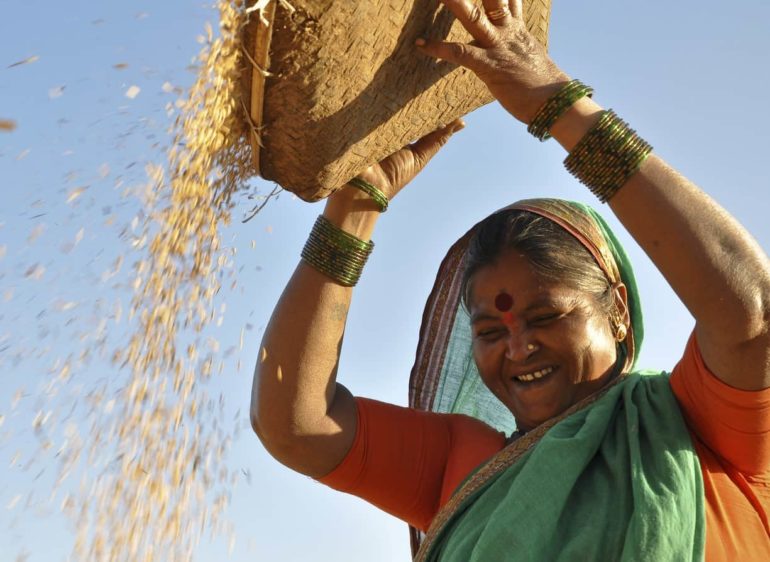Recently, the U.N. Food and Agriculture Organization (FAO) announced that it will start a partnership with the Self-Employed Women’s Association (SEWA) in India. The partnership aims to increase access to land, financial resources, and skills for rural women.
According to FAO, women represent on average 43 percent of the agricultural labor force. But they lack access to productive resources including land, education, information, financial services, technologies, and markets, which affects their productivity.
Rural women are also affected by high poverty levels due to limited livelihood options, lack of income-generating opportunities, and limited participation in decision-making processes, according to FAO.
In India, Ela R. Blatt created SEWA in 1972 to promote labor rights for women who are informally employed. SEWA is a trade union that has 1.9 million registered self-employed women workers in India.
SEWA works to support marginalized women farmers and informal sector workers by developing social mobilization campaigns and capacity development in India.
In India, around 94 percent of the female labor force is unorganized, according to SEWA.
One of SEWA’s main objectives is to provide rural people with the resources to organize themselves.
“Organizing is the key to empowerment. Organizing is the process by which people who are individually weak and vulnerable unite and create power together. When individuals are among the poorest, least educated, and most disenfranchised members of society come together they experience dramatic changes in their lives,” says Renana Jhabvala of SEWA.
The organization works with these workers to help them become recognized as fully employed, allowing them to receive work, income, and social security in India.
Bhatt also started the Cooperative Bank of SEWA to provide financial services to its 93,000 members.
Initially, the SEWA Bank had 4,000 self-employed women workers, and it later grew to more than 50,000 depositors in India. The SEWA Bank operates as a cooperative, meaning that the members and customers are self-employed women, and decisions are made by an elected board.
“The SEWA Bank has directly contributed directly in achieving, to some extent, the larger SEWA goals of organizing and creating visibility for self-employed women, enabling them to get a higher income and to have control over their own income,” says Nanavaty.
And according to Barbara Ekwall, the Senior Liaison Officer at FAO, North America, spoke about Santaban Pruthvi Shia Chauhan, a young widow in rural India. Ekwall explains that the young widow is poor and cannot provide enough food for herself and her family.
“She owns a small portion of land that she uses to produce food, works occasionally as farm labor on other’s people’s farms, sells milk, repairs pumps, trades in food items, manages a community savings cooperative, and is actively contributing to promoting the status of other women through her participation in SEWA, the Self-Employed Women’s Association,” says Ekwall.
FAO indicates that it will cooperate with SEWA to develop inter-sectoral participatory approaches and monitoring and evaluation processes to support rural women.
Both organizations will focus on documenting and identifying effective and innovative practices used by farmers.
FAO and SEWA emphasize that it is important to conduct research on the experiences of women in the rural economy in order to promote sustainable food security and nutrition, and develop policies designed to support rural people. According to FAO, “by strengthening support to these organizations and facilitating women’s membership, the international community will accomplish great strides in the eradication of hunger.”













